Back in time for Halloween with our scary animals! Some are traditionally ‘Halloween’ animals, but this one is more in the spirit…one that rightly feels disturbing and causes nightmares in some places for real. I am speaking of the sea lamprey Petromyzon marinus, one of those animals that just seems appropriately creepy for the season. And this figure is an extremely special one that is not actually available to the general public (but I always find a way!)
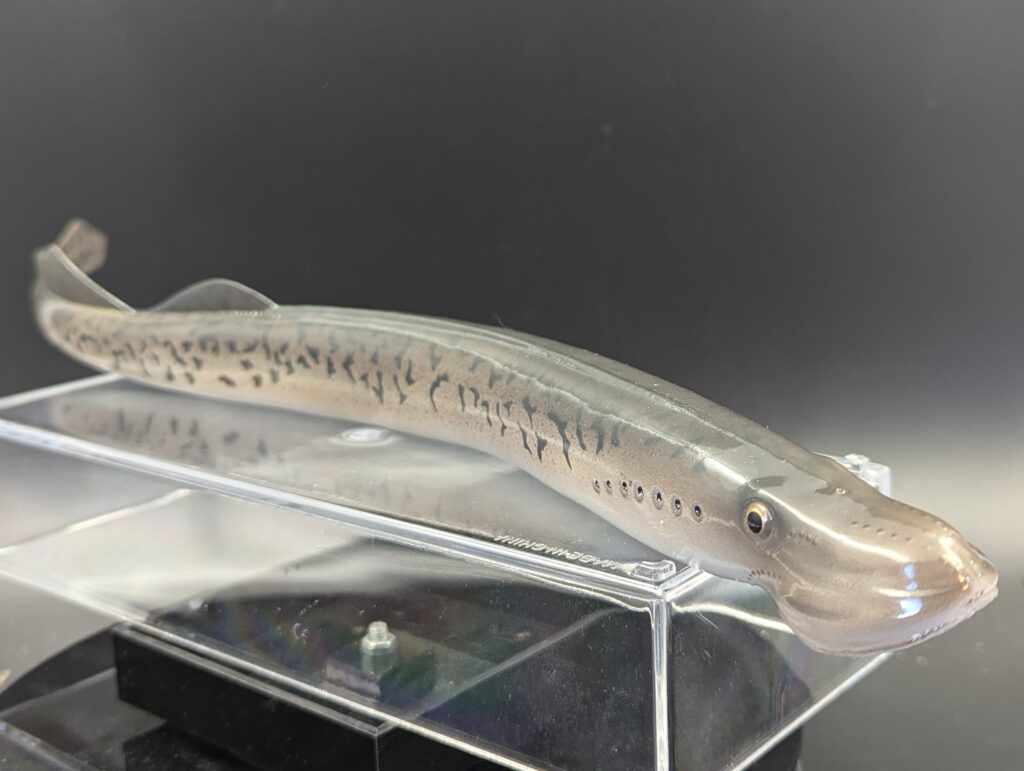
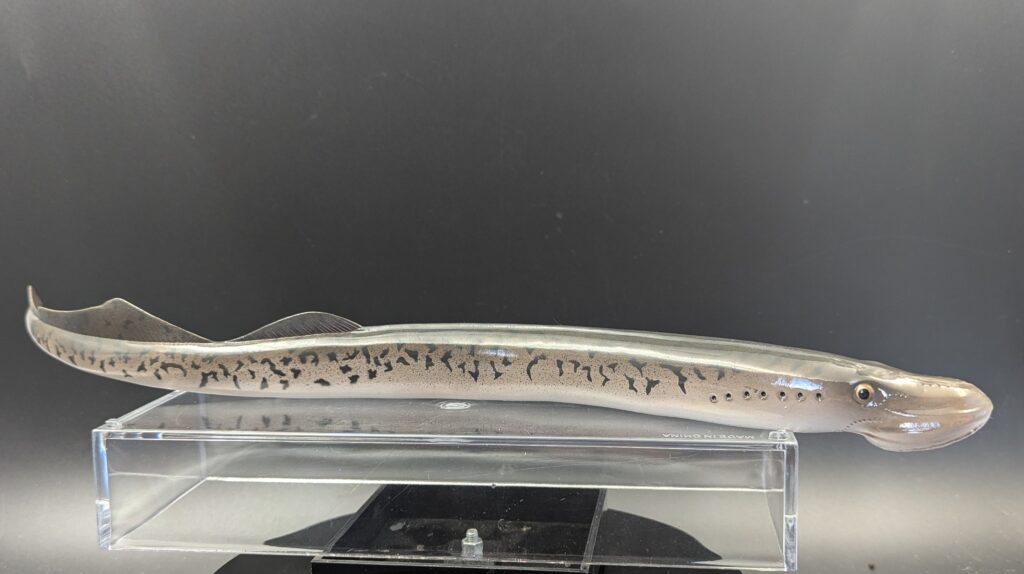
The sea lamprey is one of several species of lamprey (clade ‘Hyperoarteria’), which together with hagfish comprise the Cyclosquamata (depending on what studies are used for phylogeny, it’s a whole thing). These are the only living species of ‘jawless fishes’, meaning basal vertebrates that are generally fish-like but their mouths do not function as hinged jaws. Along with a broad range of fossil groups these are familiarly known as ‘agnathans’, although this is probably paraphyletic.
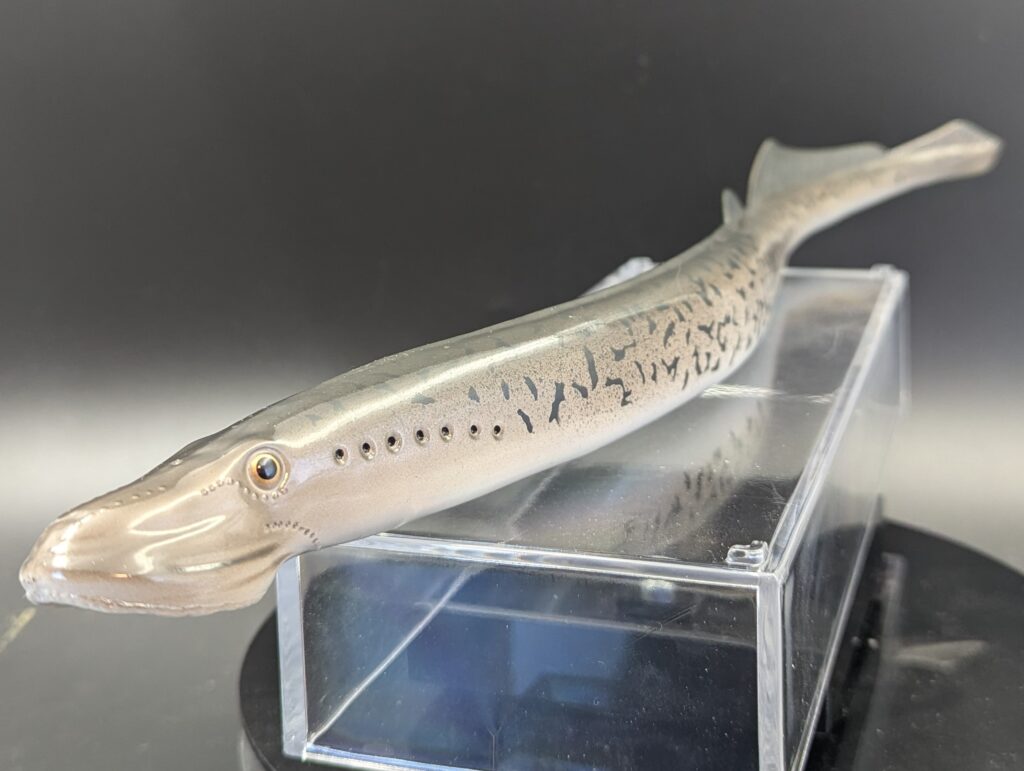
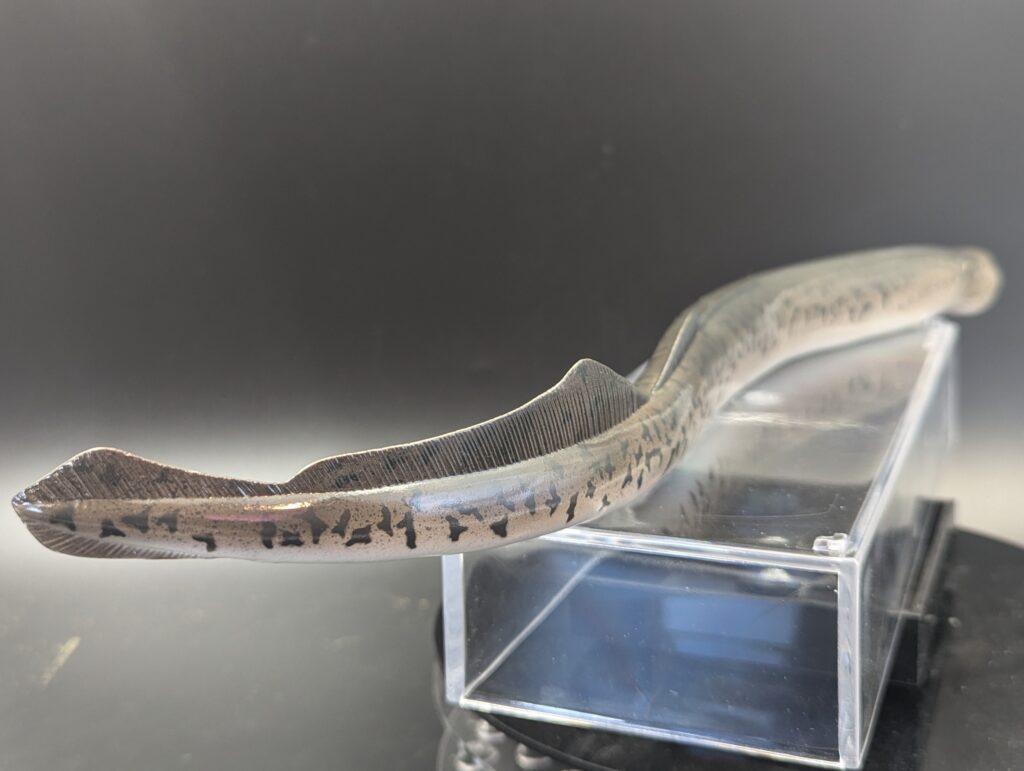
Modern lampreys spend the majority of their lives in a juvenile form called an ammocoete, where they burrow in sediment and filter feed. In the more familiar adult stage, about half of lampreys species don’t feed but instead live off of reserves from the ammocoete stage; the other half are probably more familiar as the carnivorous (often referred to as ‘parasitic’) fish that prey on fish (and sometimes marine mammals…and in one case possibly carrion) by latching on and rasping holes into their sides. All of the non-predatory lampreys are exclusively freshwater, but the predatory species are split between strictly freshwater and anadromous (inhabiting marine but breeding in freshwater) although even the latter have isolated freshwater populations.
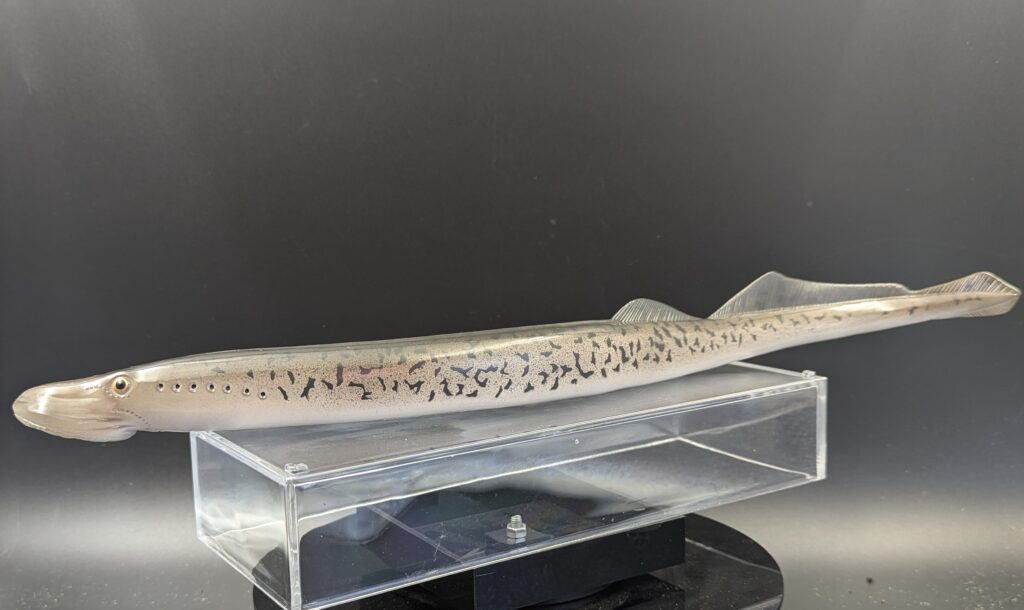
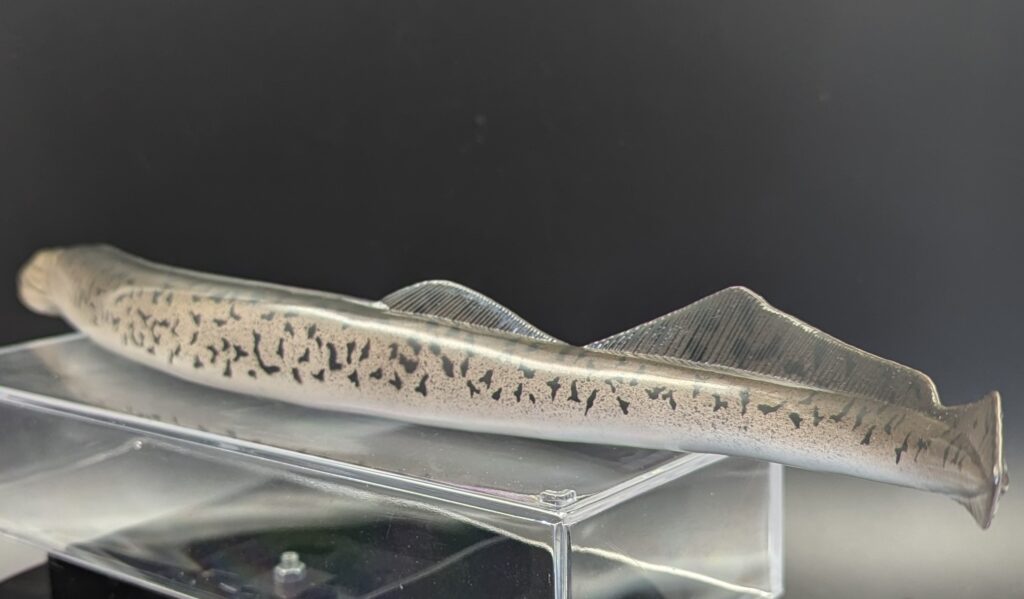
Lampreys are restricted to temperate climates, in inland freshwater or coastal areas, but some of marine species range widely in their oceanic ranges. One of these species is the animal we’re looking at here, the sea lamprey, which also happens to be one of the predatory species of lamprey. Under its normal circumstances, sea lampreys ranged as adults through the Atlantic Ocean between Europe (which supports a fishery for them?) and North America, as well as into the Mediterranean and Black seas, and moved inland to breed in coastal freshwater areas. In these environments, their prey species are adapted to deal with and survive the attacks from adult sea lampreys. But with the opening of the Great Lakes via canal locks, the sea lamprey was able to make its way inland to become an invasive pest species with a remarkable and disastrous effect on the native fish stocks (admittedly there are a number of other deleterious invasive species in the Great Lakes as well). Apparently, adult sea lampreys spend about 12-18 months in their predatory adult stage (after as many as 10 years in their larval form!), and can kill a lot of fish in this time. This invasion is actually the reason that this model exists. Even in their natural habitats sea lampreys are assessed as Least Concern by the IUCN.
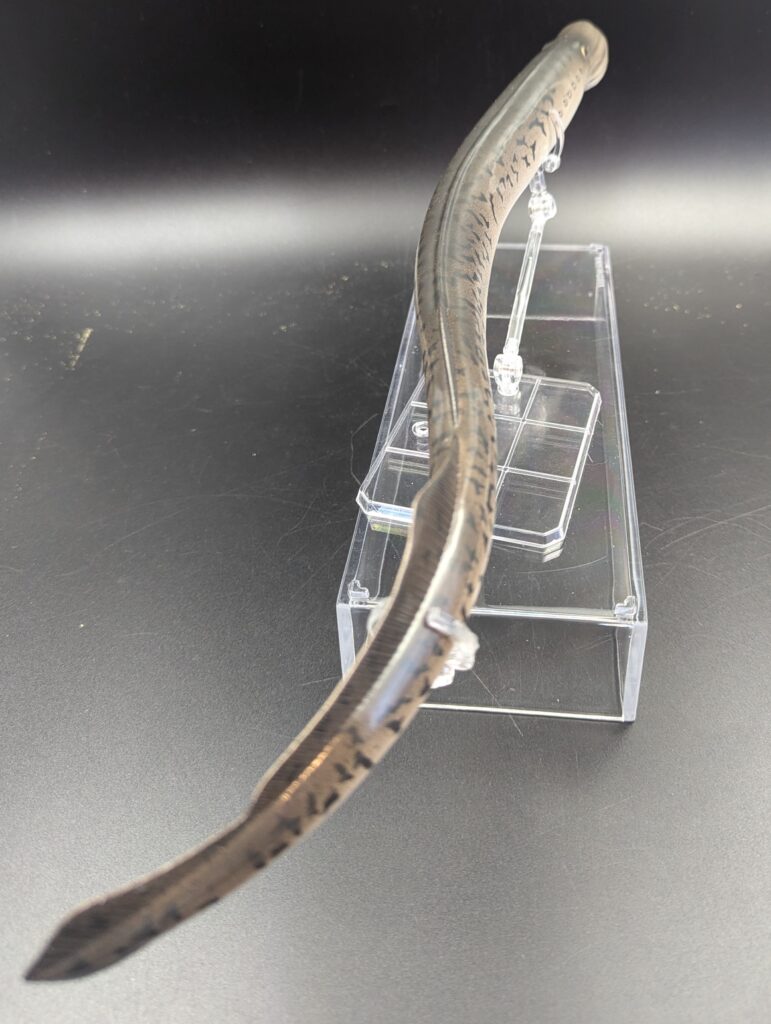
Safari was commissioned to produce the figure by the Great Lakes Fishery Commission as part of a broader educational package used to promote awareness of the species–and the problem. Having received the package, they are going all out–lots of materials including brochures, activity materials, and even tattoos! Of course, the big model is the best way to familiarize people with a fish they may not be aware of–it’s a big model made with stunning detail. Which is appropriate, as sea lampreys can be relatively large–in marine environments up to 120cm (4 feet!) but in landlocked environments (like this one) a normal maximum would be about half that, or 64cm long–the figure itself is about 46cm long, so roughly 1:2 scale for a fully grown animal, but it would work for a smaller adult at 1:1. That figure size is great to make sure that the fine details you could see on the real fish will be clearly visible–a fantastic way to demonstrate the educational value of a physical model.


Starting with the body overall, the figure is sculpted to really reflect the real animal. It has a long, tubular body, tapering to the tail. It is shaped in a very elongate s-curve, with a tighter left arc at the tail end. The overall body is smooth and scaleless, as it should be, except for the distinct finnage–no paired fins, but two dorsal fins on the posterior half of the body, the forward one being shorter and smaller, while the larger one extends back into the dorsal lobe of the small caudal fin. The caudal fin then wraps in an asymmetric diamond shape around the tail tip to have a small ventral lobe. All of the fins have distinct fin rays supporting them. Along the dorsal midline is a slight ridge leading to the dorsal fins, indicating the vertebral column (and demonstrating our shared ancestry!). The ventral surface is slightly flattened and mostly featureless except for a cloacal aperture. And of course, the labeling from Safari, including the website for the organization that commissioned the figure.
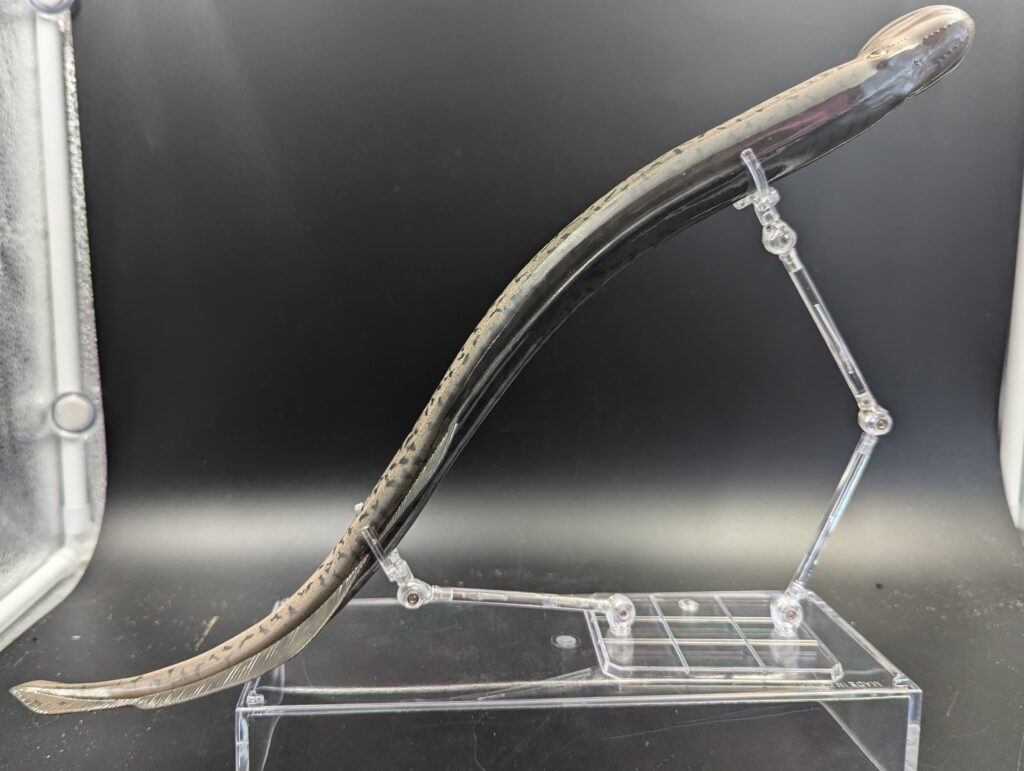

Focusing on the distinctive head, it is low-slung and rounded with a flattened mouth and the distinct oral disc for a mouth (the ‘buccal funnel’). This is an admittedly weird structure that Safari captured well. The raised ‘lips’ are set in an oval, with the mouth cavity set concave into the head. The overall colour is pink, with a series of small yellow teeth in concentric rings around the throat; within the throat is the tongue, with teeth on it as well. This apparatus is how a lamprey clings to a fish, scrapes a hole, and begins to ingest the blood–why yes, they are also called vampire fish! The eyes are large and bright, gold with large black pupils. Behind the eyes are seven gill openings, which appear as small holes, rather than the more familiar slits we think of for fish and sharks. There are several series of raised tubercles on the head–a pair expanding in a V from the snout tip towards the eyes; a line that forms in a downward arc from below each eye, meeting below the head in a ring at the ‘throat’; and a line that begins in front of each eye, extends to the eye, and then arcs below and around the bottom of each eye. These structures are part of the lamprey lateral line system which is visible on the real animal as very small pores along the sides, but not visible on the figure. In between the eyes is a single larger pore–this is the medial nostril, unique among vertebrates in lampreys in that it is not paired.
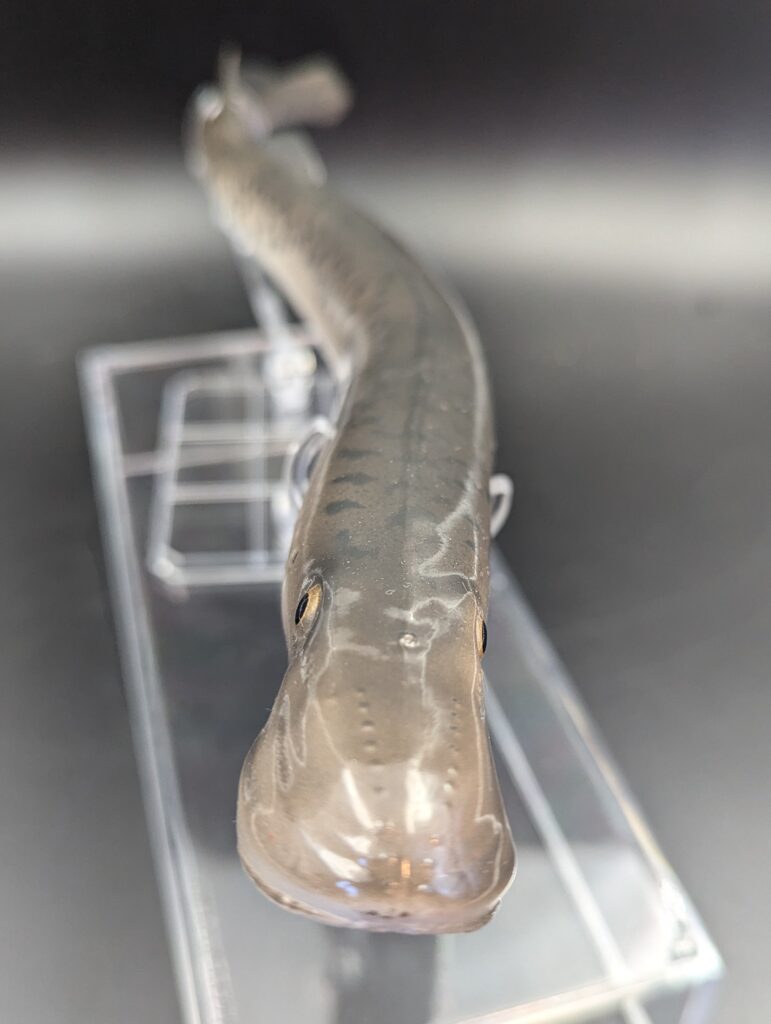

The colouration is also top level–The very dorsal surface is a very dark olive, and it very gradually grades lighter along the sides to a light tan, interspersing more with a cream colour until the belly is solid white. The fins are just a little darker than the back, a bit more brown than the dorsal surface. Along the back and sides, including the fins, are numerous irregular black squiggles. Mixed in amongst all that is a dense peppering of tiny black dots and specks. The face is primarily the lighter olive down to the lips of the oral disc. I’ve already mentioned the distinctly painted mouth cavity and throat. The whole thing has the look and feel of a real lamprey…and I speak from experience:

Overall, this is a great figure of a figure that has a lot of freaky Halloween aspect. Invading territories and causing untold destruction…sucks blood from victims…weird, freaky snake-like look? I am so excited to have been able to get one–when I found out it existed, I spent quite a bit of time tracking down the source. Normally, I would say it’s an awesome model (it is!) and collectors should try to find one, but it’s not really available. The kits are only available to regional people and places as part of their educational programs, but the Great Lakes Fishery Commission was kind enough to help me out. So that said…I hope I don’t create a small flood of requests (I did point a number of fishery and ichthyology friends in the direction of course). I would instead prefer to see them make these available some other way, in the vein of the red-cheek salamander. What better way to really promote your focus animal and the mission behind it? Safari really knocked it out of the park with this one. Plus, there aren’t really other lamprey figures out there…at all. A few 3D printable models, a Panini one (that I still don’t have)…and one from my old FaunaFiguresFishes line…okay, we really need someone to make an actually-available figure for everyone. I can’t be the only one that needed it!
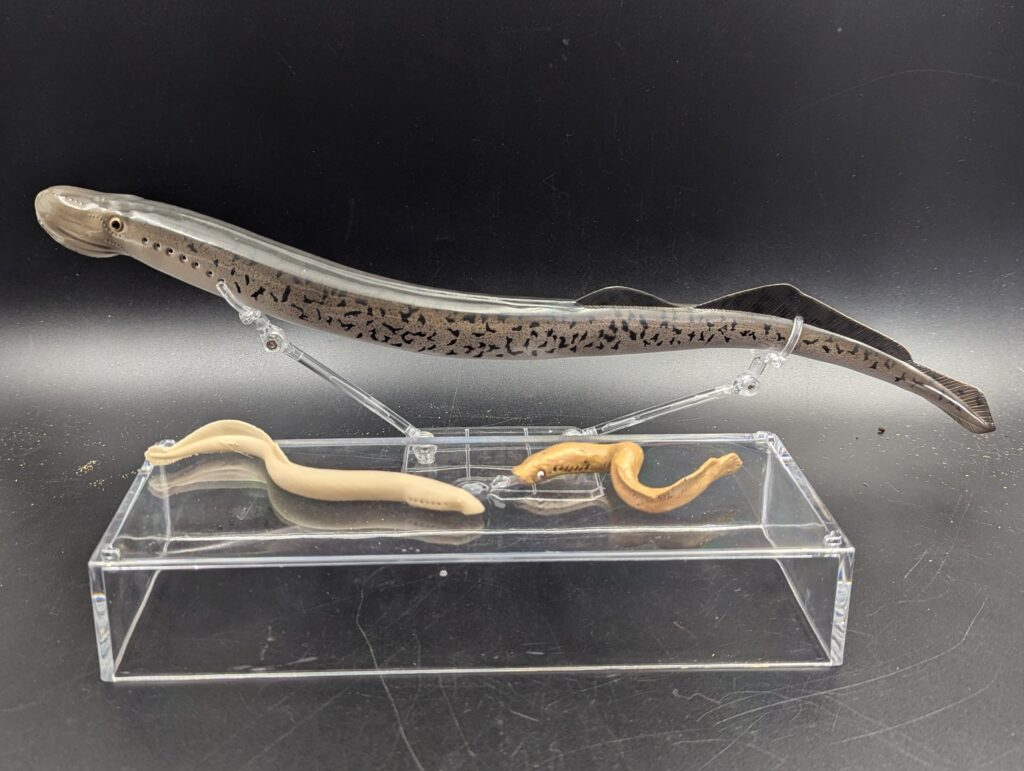
Disclaimer: links to Ebay and Amazon on the AnimalToyBlog are affiliate links, so we make a small commission if you use them. Thanks for supporting us!



